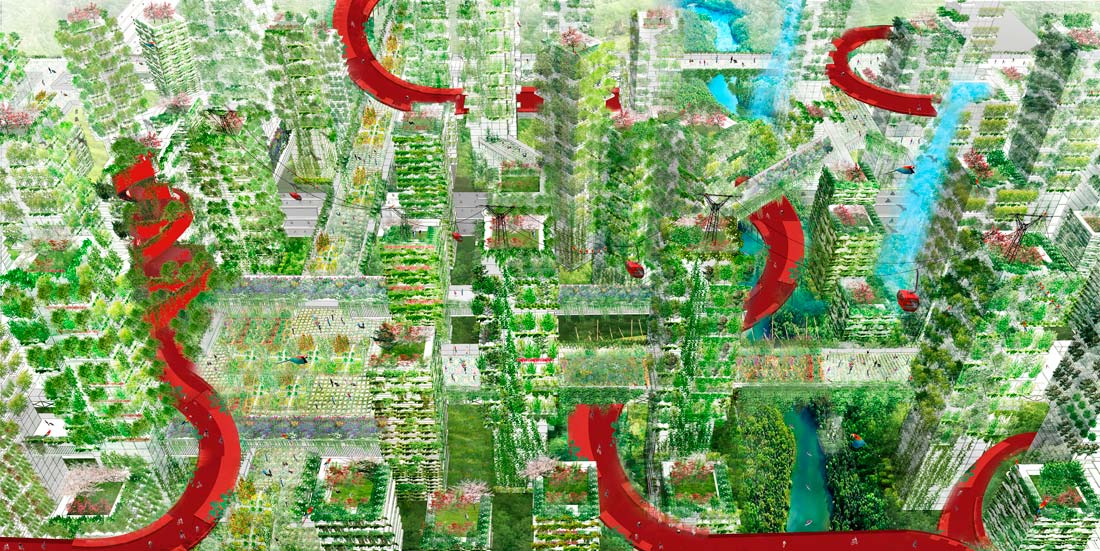Shenzhen and other cities, are reaching a population of 60 million people. Shijiazhuang for its part, has a sad record: it is the city with the highest rate of air pollution in China. A pall of smog and soot rising only a few days a year. The Forest City in Shijiazhuang will be a new city for 100,000 inhabitants. A city of a new generation, capable of becoming a model of sustainable growth in a large country seeing, each year, 14 million farmers migrating to the cities.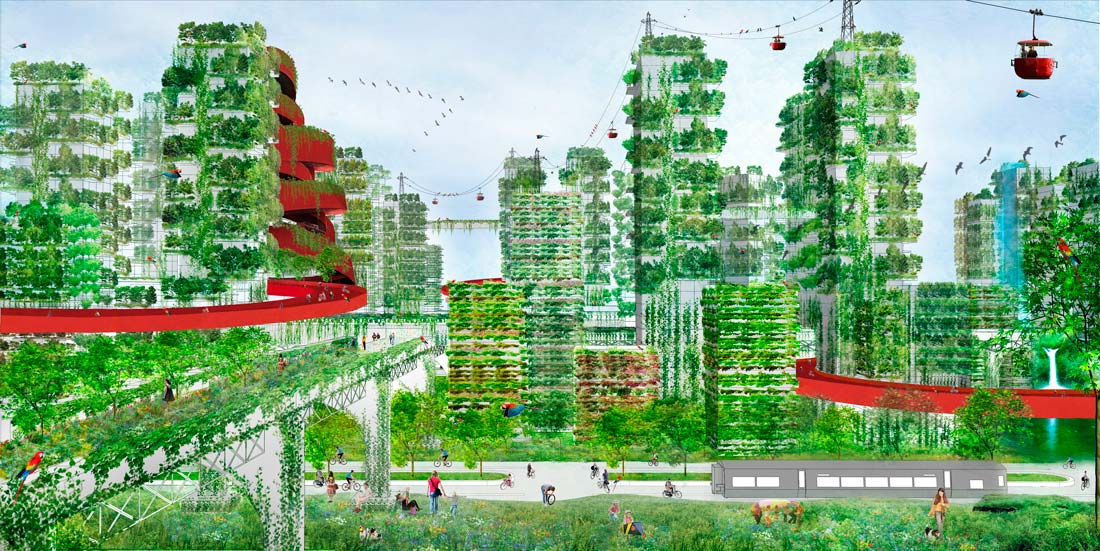
1. The prototype of a city composed by Vertical Forests.
Forest City Shijiazhuang (FCS) is the prototype of a new generation of small, compact and green cities, composed by dozens of tall and middle size buildings – the so called “VerticalForests”– all surrounded by the leaves of trees (ranging from 3-9 meters in hight), shrubs and flowering plants. Every VF grafts the equivalent of thousands of 20.000 square meters (2 ha) of a real forest.
2. An urban ecosystem.
Forest City Shijiazhuang is an urban ecosystems which hosts 100,000 inhabitants and occupies a land of 225 hectares. Forest City Shijiazhuang is composed by 5 districts and one central Park (carpel). Every district (petal) is hosting ca. 20,000 inhabitants. Every Petali is a mix-use social environment, with residential housings, offices, retails, malls, public spaces and gardens. The central Park (carpel) is the place for the main Public Facilites of FCS: the Hospital, the School, the Cultural Activities.
3. An anti-sprawl device.
Every Forest City will concentrate in a vertical dimension – and within a perimeter of 1,5 for 1,5 square kilometers (225 hectares) – the urban volumes that normally are hosted in a 25 hectares of land. For this reason, Forest City Shijiazhuang is the prototype of a new model of urbanisation in China, which doesn’t consume agricultural and natural lands, limits the costs of public transportations and reduces the energy consumption.
4. A sustainable city, with low energy consumption.
The vegetative filter on the buildings balconies creates a reduction – in the difference between the outside and inside temperature – of about 3 degrees. In summertime it reduces the heating of the facades by up to 30 degrees.
5. An absorber of CO2 and the dust of urban pollution.
FCS cleans the air The vegetation within FCS is designed in such a way as to form a continuous green filter between inside and outside of inhabited areas, able to absorb the fine particles produced by urban traffic, to produce oxygen, to absorb CO2, and to shield the balconies and interiors from very high pollution of Chinese cities. Approximatively, every SQM of a Vertical Forest facade is absorbing 0,4 kg of CO2 a year Only considering the plants housed in the vertical facades of the green buildings (and not the ones present inside the parks and gardens), FCS will absorbe approximatively 1,750 kg of CO2 a year. FCS will contribute to improve the environmental quality of the air in the whole city.
6. A multiplier the biodiversity of the living species.
FCS will be the home of hundreds of different spices of plant life, including trees, shrubs and perennials. FCS will host many spices of birds and domestic animals.
7. An ever-changing urban landmark.
Thanks to the variety of plant spices housed along the balconies – and in the presence of deciduous trees –, FCS will change its skin and the colour composition of its leaving facades, according to changing seasons and weather conditions.
8. The basic element of a new model of urbanisation in China.
FCS is a model of urbanisation and the basic element for a large number of settlement combinations. Different FC could be assembled in a cluster or along a line, creating a major conurbation, but alway in respect for the maintenance of the standard fixed in FCS: for 225 hectares of a city in a 25,000 hectares of a green (agricultural, natural, sport) permeable land.
Liuzhou Forest City
The Master Plan by Stefano Boeri Architetti for a new green city that fights air pollution is now under construction in China. The Liuzhou Forest City is commissioned by Liuzhou Municipality Urban Planning.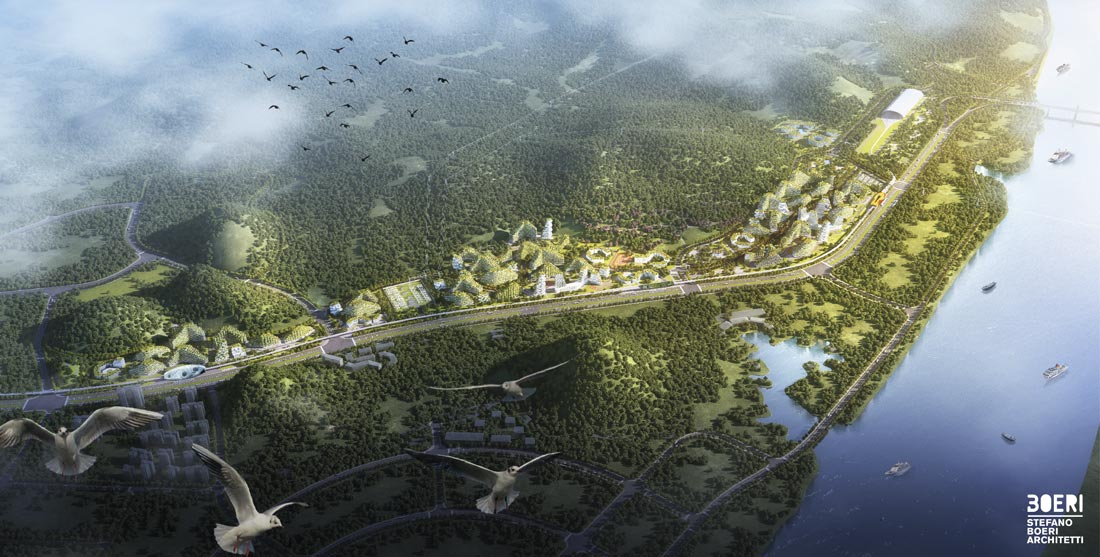
The first Chinese Forest City by Stefano Boeri Architetti is turning into reality. A city where offices, houses, hotels, hospitals and schools are entirely covered by plants and trees.
Once completed, the new city will host 30,000 people, absorb almost 10,000 tons of CO2 and 57 tons of pollutants per year and produce approximately 900 tons of oxygen.
Liuzhou Forest City will be built in the north of Liuzhou, in the mountain area of Guangxi, in the southern part of China; in an area that covers 175 hectares along the Liujiang river.
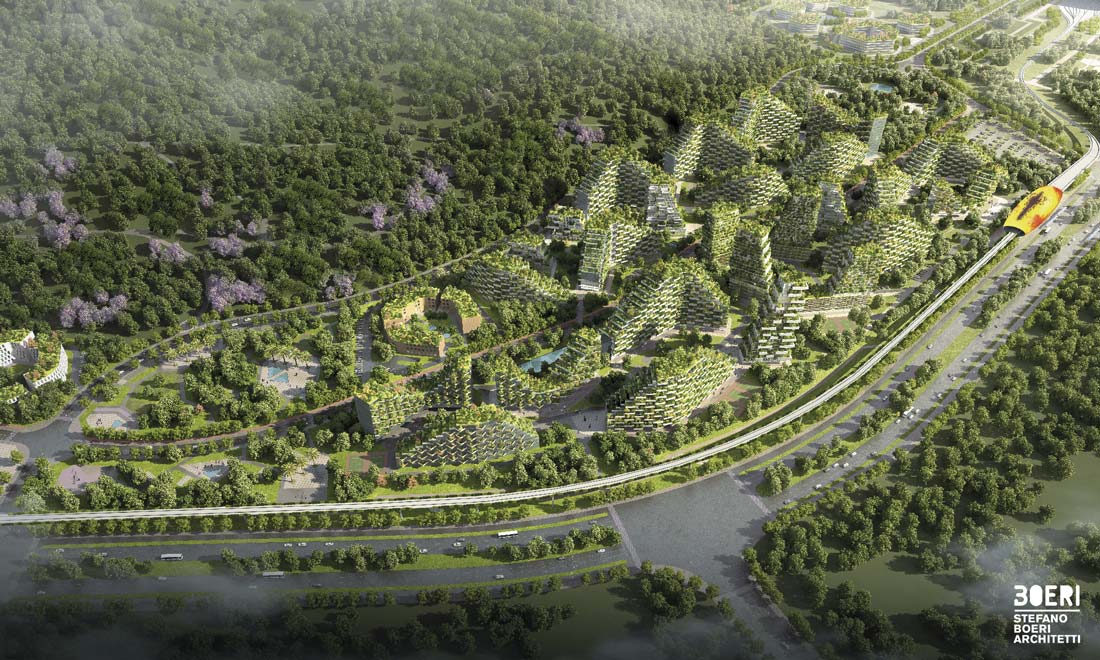
The new green city, entirely wired, will be connected to Liuzhou through a fast rail line used by electric cars and will host various residential areas, commercial and recreational spaces, two schools and a hospital.
Liuzhou Forest City will have all the characteristics of an energy self-sufficient urban establishment: geothermal energy for interior air-conditioning and solar panels over the roofs for collecting renewable energy.
The great innovation of Stefano Boeri Architetti’s project is the presence of plants and trees over every building, of all sizes and functions.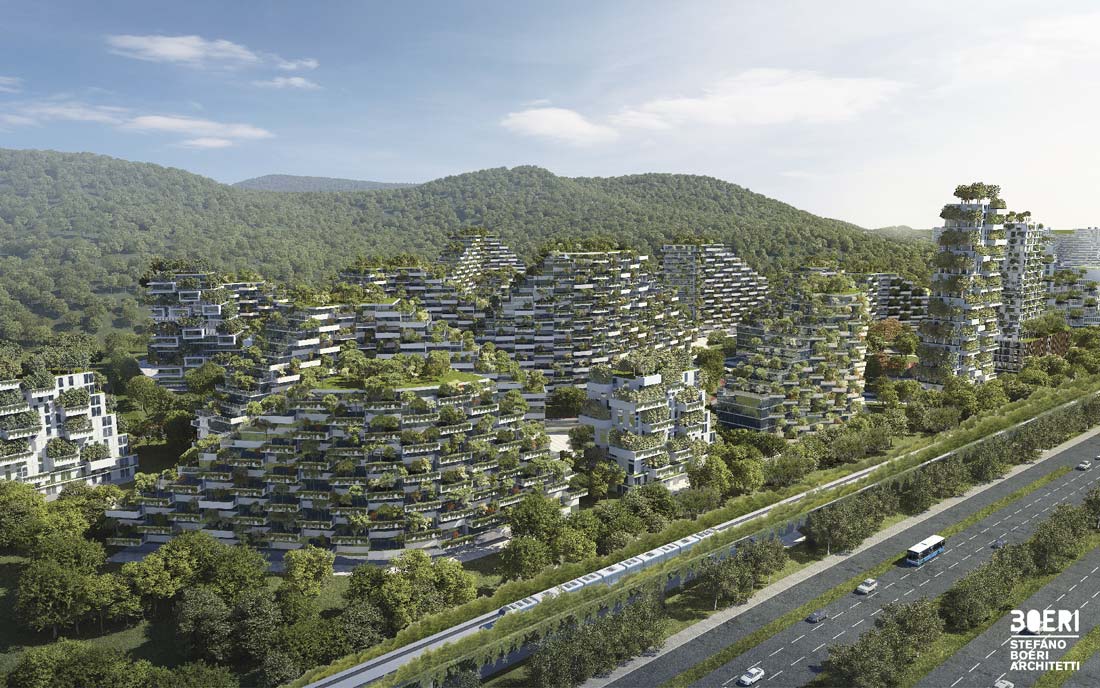
Liuzhou Forest City will host in total 40,000 trees and almost 1 million plants of over 100 species.
The diffusion of plants, not only in the parks and gardens or along the streets, but also over building facades, will allow the energy self-sufficient city to contribute to improve the air quality (absorbing both CO2 and fine dust of 57 tons per year), to decrease the average air temperature, to create noise barriers and to improve the biodiversity of living species, generating the habitat for birds, insects and small animals that inhabit the Liuzhou territory.
For the first time in China and in the world, an innovative urban settlement will combine the challenge for energy self-sufficiency and for the use of renewable energy with the challenge to increase biodiversity and to effectively reduce air pollution in urban areas – which is really critical for present-day China – thanks to the multiplication of vegetable and biological urban surfaces.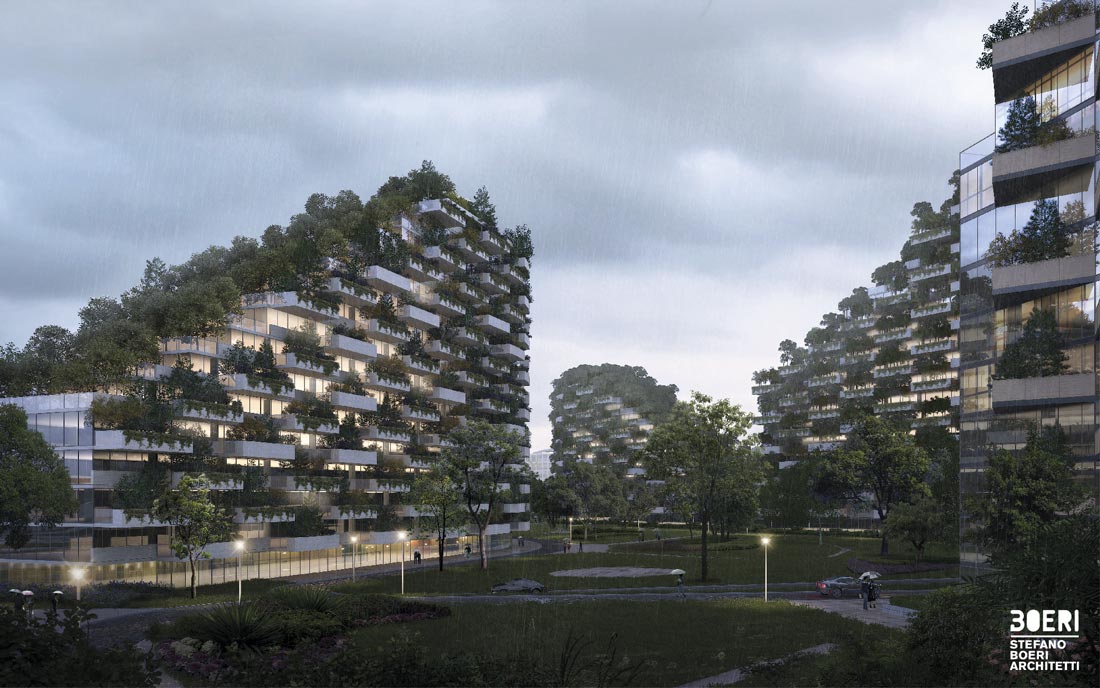
Right after the success of Vertical Forest in Milan – which is going to be replicated in many other parts of the world and in China in Nanjing, Shanghai and Shenzhen – with the Liuzhou Forest City project Stefano Boeri Architetti continues its researches for a new generation of architectures and urban environments that faces climate change, proposing new models for the future of our planet.
